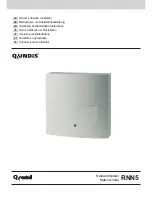
3Com Switch 8800 Configuration Guide
Chapter 30 MSDP Configuration
30-2
30.1.2 Working Principle
I. Indentifying multicast source and receiving multicast data
As shown in Figure 30-1, the RPs of PIM-SM domains 1, 2 and 3 establish peer
relationship between them. Domain 3 contains a group member.
Source
Group
Member
3
DR
RP&MSDP Peer
Register
1
Group
Member
PIM-SM 1
PIM-SM 3
PIM-SM 2
RP&MSDP Peer
RP&MSDP Peer
2
4
4
4
5
5
Figure 30-1
MSDP working principles (I)
When the multicast source in domain 1 sends data to the multicast group, the working
process of the member in domain 3, from discovering the multicast source to receiving
data from the source, includes the following:
1)
The multicast source in PIM-SM domain 1 begins to send datagram.
2) The DR connected to the multicast source encapsulates the datagram into a
Register packet and forward to the RP in domain 1.
3)
The RP in domain 1 decapsulates the packet and forwards it along the RPT to all
the members within the domain. The domain members can choose to take the
path along SPT.
4) The RP in domain 1 generates an SA (Source Active) message for the MSDP
peers (the RPs in PIM-SM domain 2 and domain 3). The SA message contains
multicast source IP address, multicast group address and the address of the RP
that generates the message. Besides, the RP in domain 1 encapsulates the first
received multicast data into this SA message.
5) If there is any group member in the domain of an MSDP peer (in the figure, it is
PIM-SM domain 3), the RP in this domain sends the multicast data encapsulated
in the SA message to group members along the RPT and the join message to
multicast source.
6) After the reverse forwarding path is created, the multicast source data is sent
directly to the RP in domain 3, which then RP forwards the data along the RPT. In
















































